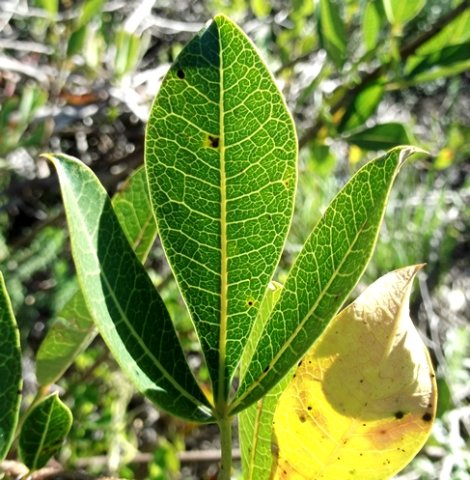Searsia laevigata var. laevigata forma laevigata leaf

Author: Ivan Lätti
Photographer: Thabo Maphisa
This Searsia leaf was seen in June on a plant growing in sandy coastal soil between Gansbaai and Pearly Beach. In its identification Searsia pyroides was ruled out on geographical distribution, S. tomentosa on absence of hairs and definite petiolules, S. chirindensis on the absence of leaflet tip elongation into drip-tips.
The most likely possibility is S. laevigata, possibly further defined as S. laevigata var. laevigata forma laevigata.
The dark green leaflets, obovate in shape, are hairless with conspicuous net-veining appearing somewhat transparent. The lower surface of the leaflet is paler than the upper one. The lateral leaflets are smaller than the central one in the trifoliolate structure. The cream midrib is dominant in the venation, the lateral veins not straight and branching variably before the margins, reducing into the reticulated net-veins. Leaflet margins are entire, finely rolled under and cream in colour, similar to the venation (Coates Palgrave, 2002; Van Wyk and Van Wyk, 1997; iSpot).

